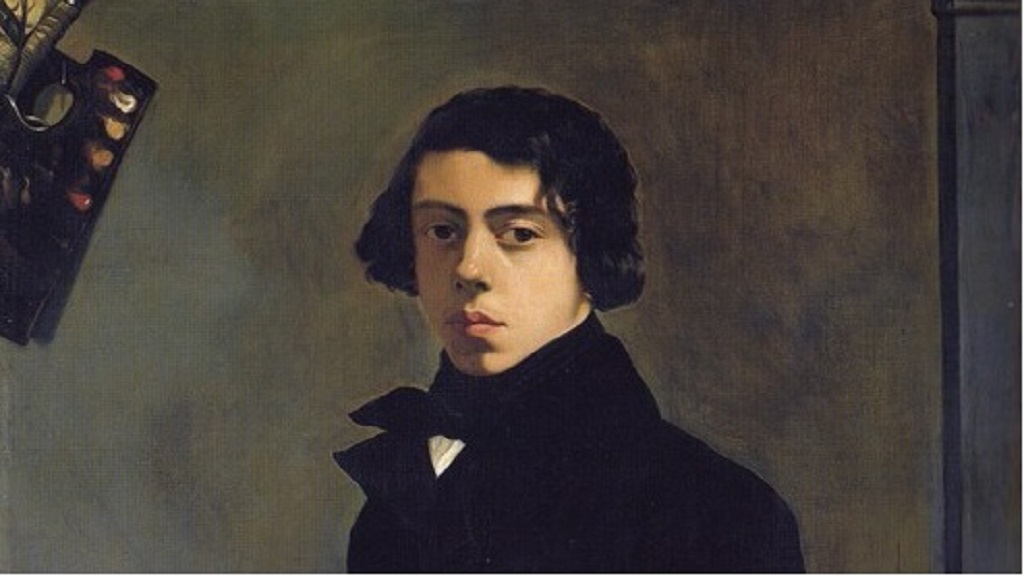Théodore Chassériau, son of the Dominican María Magdalena Couret de la Blasquiére and Benoit Chassériau, French, diplomat and merchant, was born in El Limón (Samaná). His family moved to France when he was three years old. From a young age his vocation was painting, at the age of twelve he studied in the studio of Jean Auguste Ingres (1780-1867), a painter who was distinguished by the purity and refinement of his drawings, head of the classical school, in front of romanticism .

At the age of 16, Chassériau established his own workshop, specializing as a portraitist, greatly influenced by the realism of the Nordic paintings, the drama of Spanish painting and the technique of his master. I try to reconcile the style of his teacher Ingres (classic) with that of Eugene Delacroix (1798-1863), a great colorist, head of the romantic school.
Neque porro quisquam est, qui dolorem ipsum quia dolor sit amet, consectetur, adipisci velit, sed quia non.
– Logan Mortan
Glowing Palette Painter; the pure line, the beauty of the female body, the living of the passions, the ideal and the search for the individual, were the orientations in the art of the young painter.
Chassériau surrounded himself with great figures of the time such as his friendships with Father Henri Lacordaire, Víctor Hugo, Alphonse Lamartine, Théophile Gautier, Alexis de Tocqueville etc.
Between 1832 and 1833 he painted frescoes on the life of Saint Mary the Egyptian, commissioned for the Church of Saint Merri, in Paris. At the age of 17 he participated for the first time in the Annual Exhibition of the Salon, in Paris. Among the paintings he presented is “Cursed Cain”, currently in the Louvre Museum, and “Return of the Prodigal Son” (Municipal Museum of La Rochelle).
In 1839 he painted one of his masterpieces “The Bath” (Louvre Museum) and “Venus Anadiomene”, both are nude, “Jesus in the olive grove”, iconography of Christ suffering his agony, is an inspiration of his faith Christian. This work was painted for the Saint Jean d’Angély Cathedral. At the beginning of the spring of that year, he traveled to Italy to meet his teacher Ingres, whom he met in August, but found that they had many differences. On his return to France, he painted a portrait of the Countess de Labor-Manboug, another of Marie d’Agoult, the companion of Franz Listz, who devoted some chronicles to him, “Andromeda”, and a famous portrait of Father Lacordaire.
In 1849, the constitutional president of the Second French Republic, Prince Louis Napoleon Bonaparte honored Théodore Chassériau with the distinction of “Knight of the Legion of Honor”.
In 1853 he presented his latest masterpiece “Tapidenum”, naked women in an oriental setting (Musée d’Orsay), “Interior de harem” (Museum of Fine Arts in Strasbourg), “Macbeth perceives the specter of Bank” (Saint-Denis Museum) , Reims) and “Macbeth follows Banco, finds three witches on the sand”.
He made the portraits of Delphine Gay de Girardin (Carnival Museum, Paris), The Countess of Ranchicovet, “The Defense of the Gaules” (Museum of Fine Arts of Clermont-Ferrand), which are reflections of romanticism and nationalism of the time; also “The Terrified Slave”. In 1856 Chassériau painted his latest work “Suzanne, surprise for the elderly” (Musée d’Orsay).
Théodore Chassériau died in Paris, on October 8, 1856, at the age of 37.
